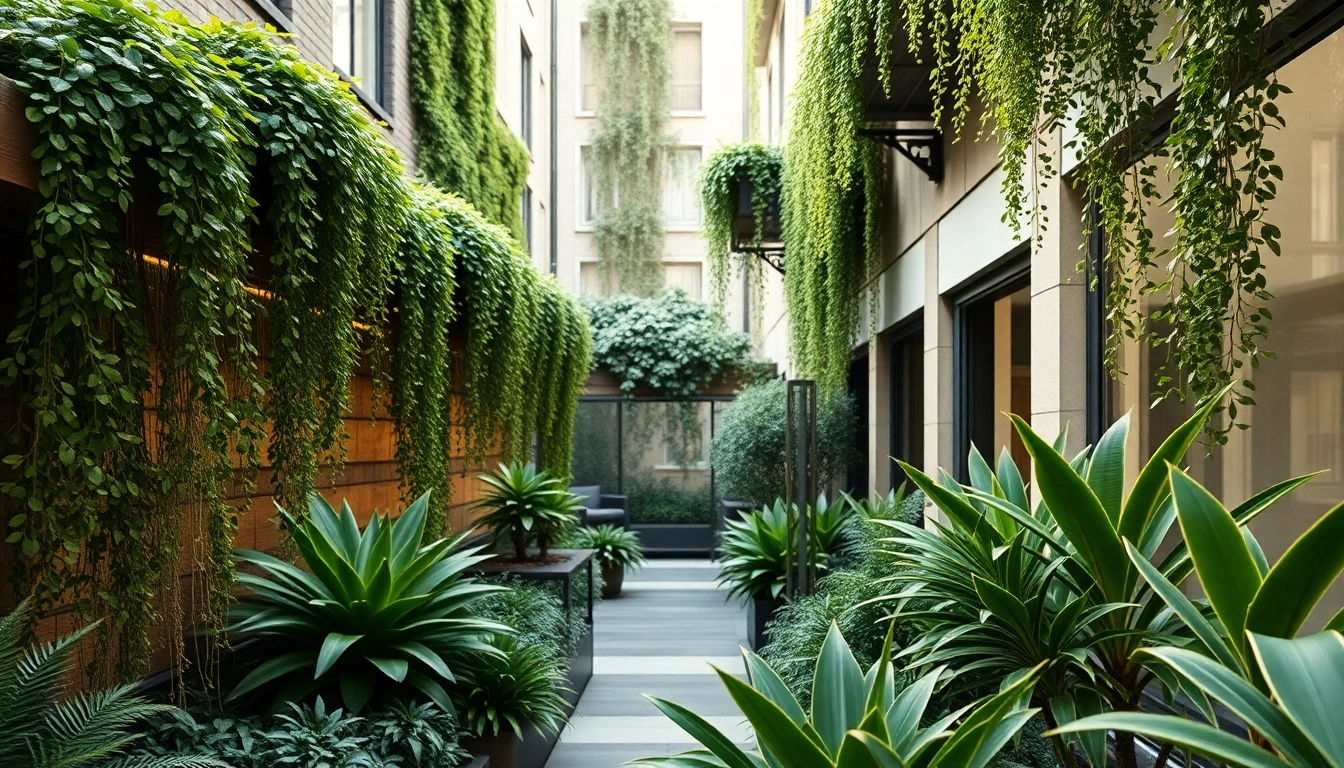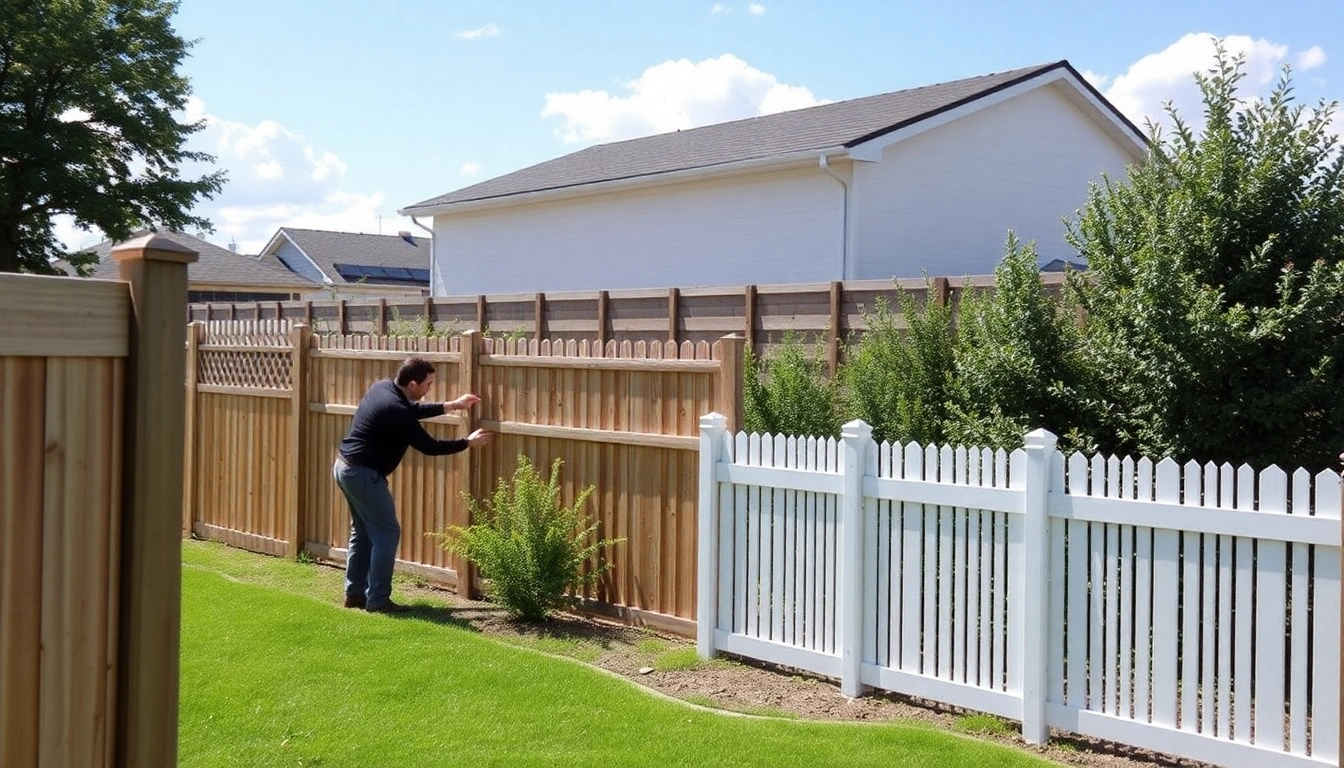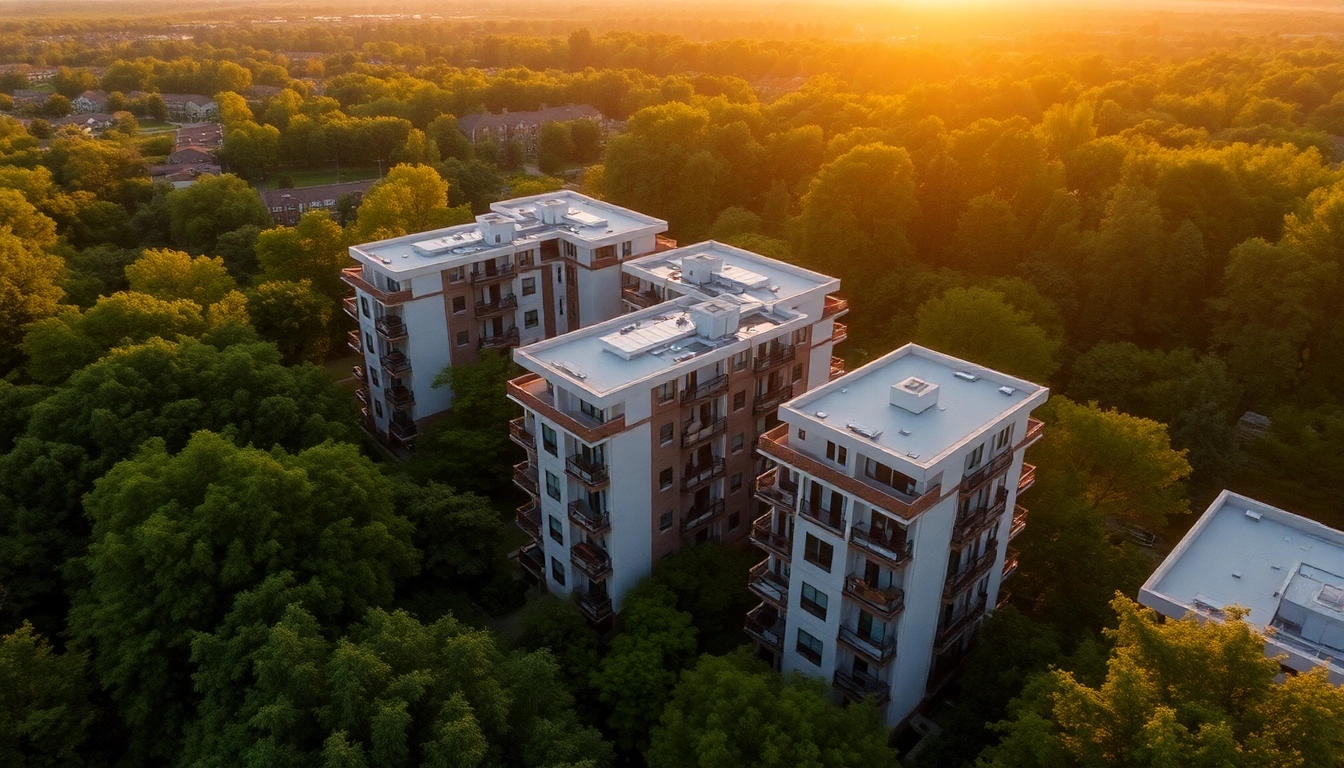Understanding the Concept of Vertikale Gärten
Definition and Benefits of Vertical Gardens
Vertical gardens, or vertikale Gärten, are innovative gardening systems designed to allow plants to grow vertically, maximizing space and adding aesthetic beauty to urban environments. Rather than traditional horizontal plots, vertical gardens employ various methods—such as using panels, trellises, or living walls—to cultivate plants upward. This style of gardening is especially beneficial in densely populated areas where ground space is limited.
The benefits of vertical gardens are manifold. Firstly, they help to green urban spaces, improve air quality, and provide habitat for wildlife. Additionally, vertical gardens can significantly reduce energy costs by naturally insulating buildings and providing cooling through evapotranspiration. Furthermore, they enhance the aesthetics of an area, contributing not only to the well-being of its residents but also increasing property values.
Types of Vertikale Gärten: An Overview
Vertical gardens come in various forms, each suited to different environmental conditions and aesthetic preferences. Here are the primary types:
- Living Walls: These are freestanding or wall-mounted systems where panels are filled with soil and planted with various species. They can be irrigated through a built-in water system.
- Trellis Systems: These involve wooden or metal structures that support climbing plants. Trellis systems are typically simpler and less expensive.
- Shelf Systems: These gardens consist of stacked shelves or planters designed to support potted plants vertically.
- Hydroponic Vertical Gardens: Utilizing a water-based, nutrient-rich solution instead of soil, these systems are efficient and require less water, making them popular in urban settings.
Environmental Impact of Vertical Gardens
The environmental impact of vertical gardens is profound. By integrating more greenery into urban areas, they contribute to the reduction of urban heat islands, thereby lowering city temperatures. Additionally, vertical gardens improve stormwater management, as they can absorb rainwater, reducing runoff and minimizing flooding risks.
Moreover, vertical gardens act as air filters; they trap dust, reduce pollution levels, and produce oxygen, thereby enhancing air quality. This green infrastructure plays a vital role in combating climate change by sequestering carbon dioxide.
Planning Your Vertikale Gärten Project
Choosing the Right Location
Location is crucial for a successful vertical garden. When choosing a site, consider sunlight exposure, access to irrigation, and the structural integrity of the wall or area where the garden will be installed. Ideally, select a location that gets at least 6 hours of sunlight a day to promote healthy growth.
Note that the orientation of the wall also matters; south-facing walls receive the most sunlight, while north-facing walls are often shaded. Pay attention to local climate conditions as well—some plants may thrive better in particular environments.
Essential Materials and Tools for Installation
When embarking on a vertical garden project, gather the necessary materials and tools. Common materials include:
- Pots, containers, or panels for plant support
- Soil or hydroponic systems depending on your gardening method
- Drip irrigation or a watering system for hydration
- Plant ties or clips for supporting climbing plants
- Hand tools like trowels, pruners, and watering cans
In addition, consider protective gear such as gloves and safety goggles, especially during the installation phase, to safeguard against injuries and protect your hands from dirt and potential pests.
Design Tips for Effective Vertical Garden Layouts
Designing an effective vertical garden layout requires creativity and foresight. Here are key design principles to consider:
- Color Harmony: Choose plants that complement each other in terms of color and texture. This will create a visually appealing display.
- Layering: Implement a layered planting scheme, placing taller plants at the back and shorter ones at the front to ensure all plants receive adequate light.
- Seasonal Interest: Incorporate plants that provide year-round interest through foliage, flowers, or colors.
- Accessibility: Design the layout so that it is easy to access for maintenance, harvesting, and enjoyment.
Plant Selection for Your Vertikale Gärten
Best Plants for Vertical Gardens
Selecting the right plants is essential for the success of your vertical garden. Consider both aesthetic and functional aspects when choosing species. Here are some popular choices:
- Succulents: These hardy plants require minimal care and thrive well in vertical gardens.
- Herbs: Basil, mint, and parsley are great choices for both functional and decorative purposes.
- Vining Plants: Plants like ivy and morning glory can create beautiful vertical effects with their climbing tendencies.
- Tropical Plants: Ferns and philodendrons can add lushness and are suitable for partially shaded areas.
Seasonal Planting Considerations
When planning a vertical garden, it’s crucial to consider the seasonal growth cycles of your chosen plants. The different seasons offer various challenges and opportunities:
- Spring: Ideal for planting new seedlings and establishing a diverse range of plants.
- Summer: Monitor for watering needs as temperatures rise, and prune any overgrown plants.
- Autumn: Prepare for cooler temperatures by planting more hardy species or transitioning to seasonal plants.
- Winter: Protect sensitive plants from frost, or opt for evergreens that offer greenery year-round.
Maintaining a Healthy Plant Environment
To ensure that your vertical garden thrives, maintaining a healthy environment is paramount. Regularly monitor your plants for signs of stress such as wilting leaves or discoloration. Ensure proper airflow and light availability and adjust your watering schedule according to the specific needs of the plants.
Fertilization is also essential; use organic fertilizers to promote growth without harming your plants or the environment. Finally, keep an eye out for pests and diseases, applying appropriate treatments when necessary.
Care and Maintenance of Vertikale Gärten
Watering Techniques and Tools
Watering is a key component of vertical garden care. Depending on the type of plants and the system used, your watering needs may vary. Implementing a drip irrigation system can be highly effective, providing consistent moisture while minimizing waste.
For manual watering, use a watering can with a long spout to reach all areas of the garden. Regularly check the soil moisture levels to avoid overwatering or underwatering, which could harm the plant’s root system.
Common Issues and Solutions for Vertical Gardens
Even the most well-planned vertical gardens can encounter challenges. Some common issues include:
- Pest Infestation: Keep an eye out for pests like aphids or spider mites. Implement natural pest control methods like insecticidal soap or plant companion strategies.
- Diseases: Fungal infections can spread quickly in humid environments. Ensure adequate airflow and apply fungicides as needed.
- Nutrient Deficiency: Yellowing leaves can indicate a lack of nutrients. Regularly fertilizing and rotating plants can mitigate this issue.
Seasonal Maintenance Checklist
Seasonal maintenance is crucial to keep a vertical garden flourishing throughout the year. Here’s a checklist:
- Spring: Clear away debris, check for frost damage, and begin planting.
- Summer: Regularly prune, deadhead flowers, and watch for pests.
- Autumn: Harvest any edible plants and prepare for winter by applying mulch or bringing sensitive plants indoors.
- Winter: Monitor for frost damage, ensuring proper protection for vulnerable plants.
Showcasing Successful Vertikale Gärten Examples
Residential Inspirations: Home Vertical Gardens
Residential vertical gardens can transform home exteriors and interiors. For instance, a small-scale vertical garden using a trellis can enhance privacy while providing aesthetic appeal. Homeowners often choose to cultivate herbs and decorative plants on patios or balcony walls. These gardens not only beautify spaces but also offer gardeners a way to grow their own food.
Commercial Applications: Vertical Gardens in Businesses
Many businesses are integrating vertical gardens into their designs. Restaurants often use them to cultivate fresh herbs or greens, enhancing their farm-to-table offerings while improving ambiance. Office buildings can benefit from vertical gardens by enhancing employee well-being and productivity—green walls have been shown to reduce stress and improve air quality in workspaces.
Community Projects and Urban Initiatives
Community-driven vertical garden projects are taking root in urban areas, leading to more green spaces. Initiatives such as community gardens on school walls or public buildings promote environmental education while beautifying neglected areas. These projects not only provide fresh produce but also foster a sense of community and ownership among residents.



